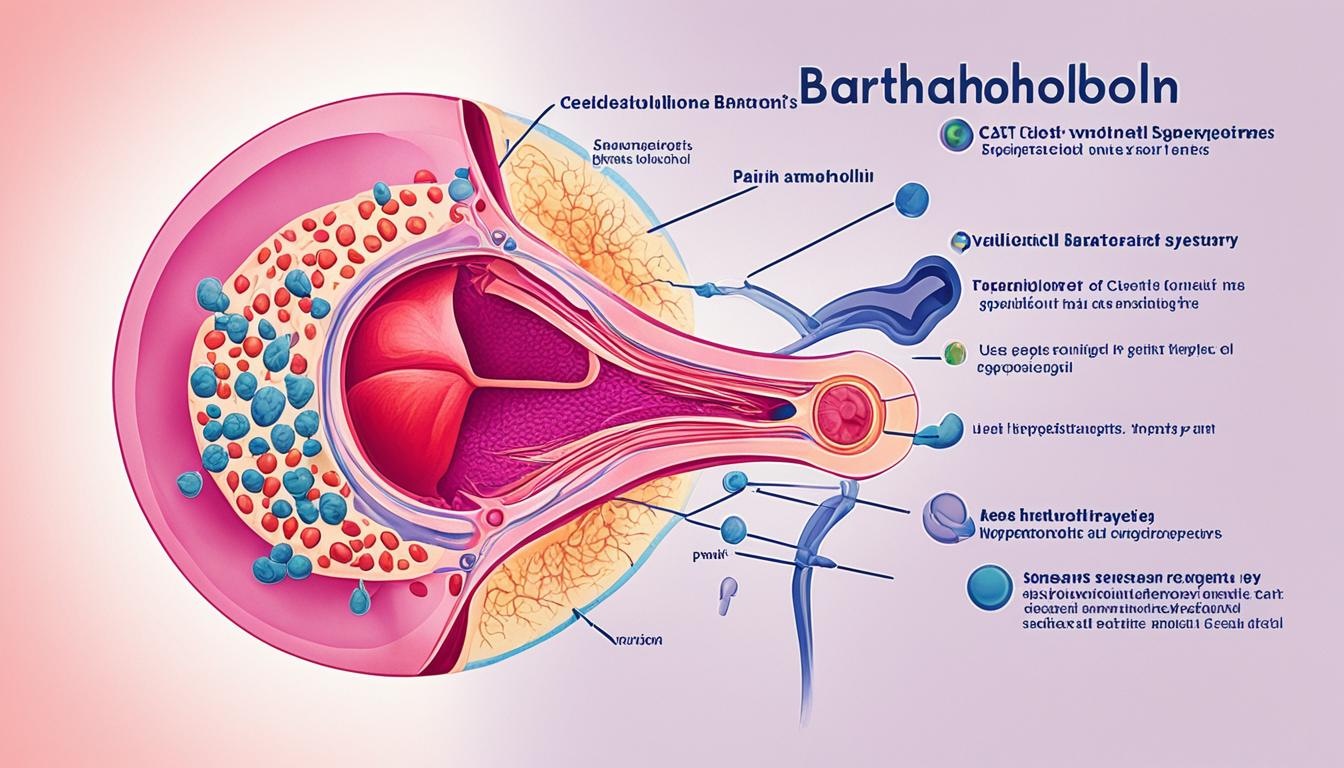A Bartholin gland cyst is common in women who can have children. It comes from the gland being blocked, forming a cyst. This cyst can cause a lump near the vagina, pain with touch or movement, and discomfort during sex.
Blockages in the gland’s duct are the main cause. This can happen after injury, birth, or for no clear reason. Bartholin cysts happen most during the years when one can have babies, becoming less common after menopause.
Doctors diagnose Bartholin’s cysts with a physical exam and by asking about past health. Sometimes they do extra tests to check for other problems or infections. These tests can include looking at discharge under a microscope, taking a small piece of tissue for testing, or culturing a wound.
Treating Bartholin’s cysts varies based on how bad they are. For ones that don’t show symptoms, warm baths and pain medicine might be enough. Cysts that cause issues may need more involved care. Doctors can cut them open and place a special tube to keep them open or do a surgery to remove the gland.
New treatments like stem cell therapy are showing good results. But, scientists need to do more studies to know how well these treatments work over time.
Key Takeaways:
- Bartholin’s cyst is a common gynecological condition affecting women of reproductive age.
- The cyst is caused by a blockage in the Bartholin gland’s duct.
- Diagnosis is typically based on physical examination and medical history.
- Treatment options range from conservative measures to more invasive procedures, depending on the symptoms and severity.
- Innovative therapies like stem cell therapy offer potential alternatives for managing Bartholin’s cysts, but more research is needed.
Causes and Diagnosis of Bartholin’s Cyst
Bartholin’s cysts happen when the Bartholin gland’s duct gets blocked. This blockage can come from harm in the genital area, an episiotomy, or for no clear reason. They’re more common in women of childbearing age. After menopause, the chance of getting one goes down.
The symptoms of Bartholin’s cysts can vary. Some women might not feel anything unusual. Others might see or feel a lump near the vagina. This can make everyday activities like walking or sitting painful. Sex may also hurt. These issues can lower a woman’s quality of life.
To diagnose Bartholin’s cysts, a healthcare provider will check you out. They’ll look closely at the area and maybe do more tests. This is to make sure the symptoms aren’t from another problem. If there’s discharge, it might be tested for infections. And some may need a biopsy to check for cancer.
Getting the right diagnosis is key. It helps choose the best treatment and improve the woman’s health.
Bartholin’s Cyst Diagnosis Methods
| Diagnostic Method | Description |
|---|---|
| Physical Examination | A healthcare professional visually inspects the affected area, checking for any lumps or abnormalities. |
| Discharge Sampling | A sample of the cyst’s discharge is collected and tested for sexually transmitted infections. |
| Biopsy | A small tissue sample may be taken to screen for cancer cells, particularly in postmenopausal women or those over the age of 40. |
| Wound Cultures | During the incision and drainage of abscesses, samples are taken to identify the presence of pathogens, such as bacteria or other microorganisms. |
Remember, it’s vital for a healthcare professional to diagnose and treat Bartholin’s cysts.
Treatment Options for Bartholin’s Cyst
The way we treat Bartholin’s cysts changes depending on the symptoms and how bad they are. If you have no symptoms, you might not need treatment. You can just keep an eye on it. Warm sitz baths and pain relievers can help with symptoms and let small, infected cysts heal on their own.
For cysts that are causing problems or are very painful, certain procedures might be needed. Surgery for Bartholin’s cyst involves making a cut to drain it and placing a Word catheter. This surgery offers quick relief. The Word catheter stays in place for a few weeks. It helps the cyst to drain and the area to heal.
If you keep getting cysts or they really affect your life, you might need surgery to remove the Bartholin gland. Remember, while some home remedies can help, it’s crucial to get checked by a doctor. They can give you the right diagnosis and plan for treatment.

